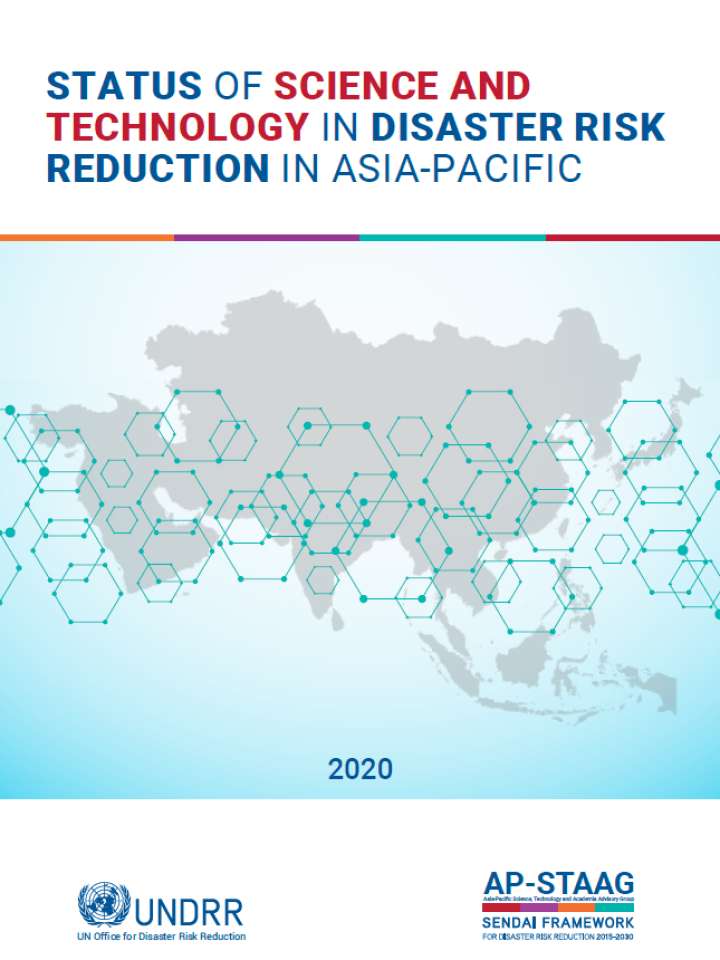- Home
- Documents and publications
Status of Science and Technology in Disaster Risk Reduction in Asia-Pacific 2020
The Status of Science and Technology report is an important step for monitoring the progress in the implementation of the Sendai Framework and an attempt to capture some of the progress across geographies, stakeholders, and disciplines towards the application of science and technology towards risk reduction in Asia-Pacific.
Developed by a group of individuals from the UNDRR Asia-Pacific Science, Technology and Academia Advisory Group (AP-STAAG), this report is based on a qualitative survey and submission of case studies on the application of science and technology for disaster risk reduction. A total of 69 responses were received representing government, UN agencies, a network of universities, and the U-Inspire Alliance. A total of 23 case studies were also received from 11 countries, in addition to four case studies on specific themes.
The report is presented in three parts:
Part-1, based on the survey responses, presents the regional analysis of the progress in the Science and Technology Roadmap for disaster risk reduction.
Part-2 of the report presents a regional status update of six selected themes namely; 1) NATECH 2) Eco-DRR 3) Capacities Building in Higher Education 4) Socio-Economic of Resilient Infrastructure 5) Space application 6) Urban Resilience and Climate Change.
Part-3 includes 27 examples of different themes and actions as listed under the Science and Technology Roadmap. They highlight actions being taken in different countries of the region to achieve one or more outputs of the roadmap.
Download
Editors' recommendations
- Science technology plan for disaster risk reduction: Asian and Pacific perspectives
- A Toolkit on Youth and Young Professionals in Science, Engineering, Technology, and Innovation for Disaster Risk Reduction
- Science and technology for DRR in the context of COVID-19
- The European Science and Technology Group (E-STAG) thematic paper of fire risk
Explore further
Is this page useful?
Yes No Report an issue on this pageThank you. If you have 2 minutes, we would benefit from additional feedback (link opens in a new window).
